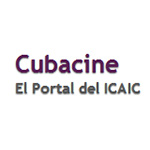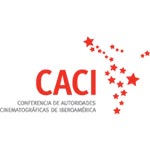Nació en Cusco, en 1937. Antes de iniciarse en el cine trabajó como periodista. Luego comenzó en el cine con la realización de cortometrajes como Huando, Tierra sin patrones e Inkari, que encontraron problemas para su distribución y exhibición, debido a la fuerte censura de los organismos estatales representantes del gobierno militar (1968-80).
Federico García se ha dedicado a mostrar en pantalla las problemáticas sociales e históricas de las comunidades andinas, de modo que se vinculen alegóricamente las luchas ancestrales con la necesidad de rebeldía que manifiesta la contemporaneidad. Su debut en el largo de ficción fue Kuntur Wachana (Donde nacen los cóndores, 1975). El guión de este filme se basó en el testimonio de los campesinos de la cooperativa Huarán, quienes financiaron la película, que narraba su constitución como entidad comunal agraria. Junto al mediometraje Runan Cycu, de Nora de Izcue, constituyó un testimonio de los sectores radicales que apoyaron las reformas de la primera fase del gobierno militar, en el período presidido por Juan Velazco Alvarado (1968-75).
Luego de debutar en el largo de ficción con Kuntur Wachana (Donde nacen los cóndores) (1975), y realizar Festín (1976), Federico García emprendió Laulico (1979), crónica épica de los comuneros de Fuerabamba, devenidos bandidos y luego luchadores por la liberación. Se acercó a temas similares con la censurada El caso Huayanay (1980), que describe el proceso judicial a los comuneros de los Andes, quienes ajustician por su cuenta y riesgo a un asesino, violador, mayordomo de un fundo y brazo ejecutor de violentas acciones contra los campesinos.
Si en las películas anteriores había trabajado en colaboración con los técnicos y artistas del ICAIC, vuelve a hacerlo con Melgar, poeta insurgente (1981), biopic del legendario poeta arequipeño Mariano Melgar (1791-1815), héroe de la insurrección que sacudió el virreinato del Perú en 1815. Y en la misma línea histórico-épica se sitúa Tupac Amaru (1983), que como en todas las anteriores lleva argumento y guión del propio director, y pretende establecer un paralelo entre el presente latinoamericano y la gesta independentista del célebre líder inca.
En 1987 Federico García toma la historia como pretexto para reflexionar sobre la contemporaneidad en El socio de Dios (1987), que detalla la penetración de las trasnacionales en la Amazonia peruana y la aniquilación de las tribus indígenas. En similares direcciones, con fuerte componente de docudrama histórico o sociológico de bajo presupuesto y aire de improvisación significativa, continuó García su filmografía con La manzanita del diablo (1990), La yunta brava (2000), biopic de José Carlos Mariátegui y El forastero (2001), que relata nada menos que la llegada de los marcianos al Valle Sagrado de los Andes, entre otras.
Federico García aportó con su debut en el cine peruano un punto de vista ideológico en el tratamiento del tema andino. Según muchos críticos, García se distanció de los afanes testimoniales, emocionales, coloristas y maniqueos que caracterizaban el tema hasta ese momento.
Falleció el 23 de octubre de 2020.
Federico García Hurtado (1937-) was born in Cusco, Peru. Before beginning his film career, he worked as journalist. His first works in the film industry were short films as Huando, Tierra sin patrones and Inkari, which had distribution and exhibition problems, because of the strong censorship of the state institutions that represented the military regime (1968-80).
In the mid 1970s and the first half of the 1980s, the most important Peruvian filmmaker was not yet Lombardi, but Federico García, who has consecrated his work to show on screen the social and historic conflict of the Andean communities, in a way that allegorically related the ancestral fights and the need of rebellion that demanded the present days. His debut feature film was Kuntur Wachana (Donde nacen los cóndores) (1975), with an screenplay based on testimonies of peasants of the cooperative Huarán, who also financed this project that told the story of Huaran setting-up as an agrarian communal institution. Like the medium length film Runan Cycu, by Nora de Izcue, Kuntur Wachana was a testimony of the radical sectors that supported reforms during the first stage of the military regime, in the period under the presidency of Juan Velazco Alvarado (1968-75).
After his debut in the feature film with Kuntur Wachana (Donde nacen los cóndores) in 1975 and the production of Festín in 1976, Federico García undertook in Laulico (1979) an epic chronicle of the rebels of Fuerabamba, that first became bandits and after that fighters for emancipation. He also dealt with a similar subject in the banned film El caso Huayanay (1980), which describes the trial against the Andes rebels, who executed, at their own risk, a murderer, rapist and foreman of a country state, and perpetrator of violence acts against peasants.
As he did in his previous films, he worked again with the ICAIC technicians and artists in Melgar, poeta insurgente (1981), biopic of the legendary poet from Arequipa Mariano Melgar (1791-1815), hero of the uprising that unsettled the viceroyalty of Peru in 1815. His feature film Tupac Amaru (1983), followed the same epic-historical trend and, as his previous films, had an original argument and screenplay from the director. The film also attempted to establish a parallelism between the Latin America present situation and the one that led to the pro-independence heroic deeds of the famous Inca leader of the title.
In El socio de Dios (1987), Federico Garcia used history as an excuse to reflect on contemporary reality, in it is detailed the penetration of transnational companies in the Peruvian Amazonia and the annihilation of its native tribes. His next films evolved in a similar direction, using distinctive elements of the low budget historical or sociological docudrama with an air of remarkable improvisation: La manzanita del diablo (1990), La yunta brava (2000), biopic about José Carlos Mariátegui, and El forastero (2001), which narrates nothing else that the arrival of the Martian to the Holy Valley of the Andes.
Federico García brought to the Peruvian film an ideological perspective in dealing with the Andean theme. According to many film critics García took distance from the testimonial, emotional, colorist approaches and bias that characterized this theme until that moment.
 “Nuestro objetivo final es nada menos que lograr la integración del cine latinoamericano.
Así de simple, y así de desmesurado”.
“Nuestro objetivo final es nada menos que lograr la integración del cine latinoamericano.
Así de simple, y así de desmesurado”.













